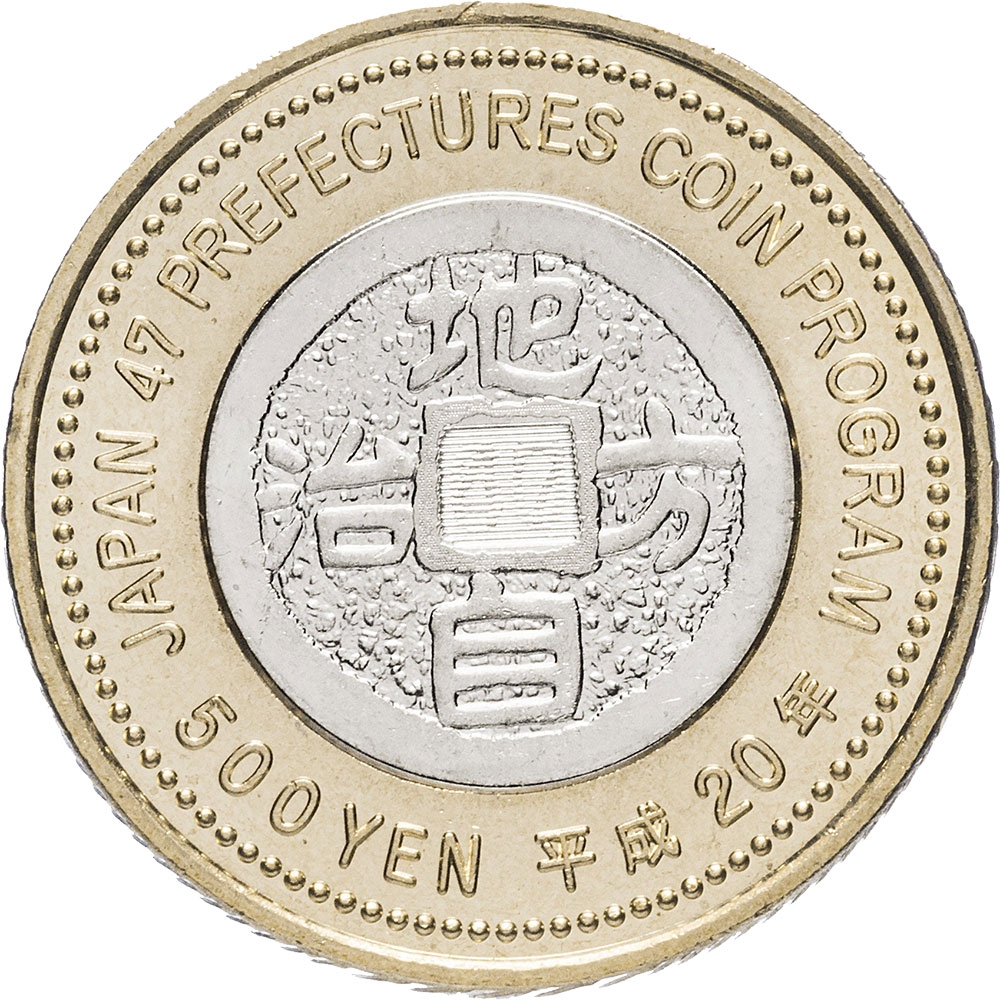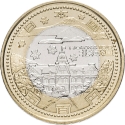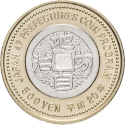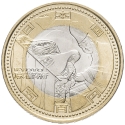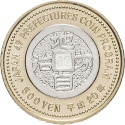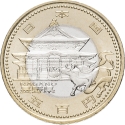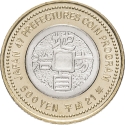You are about to finish your registration. Please check your mailbox (including spam folder). There should be a letter with a confirmation link. Check setting to make sure that your e-mail address is correct.
Send letter againDescription
To mark the 60th Anniversary of Enforcement of the Local Autonomy Law, the Japan Mint launched "Japan 47 Prefectures Coin Program" in 2008. In this program, has been issued a silver coin and bi-metallic coins for each of 47 prefectures in Japan until 2016. The obverse of both coins carry designs featuring each prefecture's representative scenery, history, industry, famous figures, and so on, while, the reverse designs are all the same except the inscription of the issue year.
Shimane is located in the southwest of Japan's mainland, facing the Japan Sea to the north. Since Shimane is close geographically to China and the Korean Peninsula, it once played an important role as a bridge to those areas in the formation of ancient Japan. As many of Japan's myths are set in Shimane, it is known as "the Home of Gods."
Obverse

|
Depicts Dōtaku discovered from the Kamoiwakura Remains in Unnan City. State name above, value below. 日 本 国 |
|---|---|
Reverse

|
The inner section shows an image of an old Japanese coin (old cast Mon coin) where Kanji letters mean “Local Autonomy”. Latent image technology is applied to the centre of the coin to make letters of “47″ representing the number of prefectures in Japan, and “60″ representing the 60th Anniversary of Enforcement of the Local Autonomy Law appear alternately when viewed from different angles. JAPAN 47 PERFECTURES COIN PROGRAM |
| Edge |
500 Yen
Heisei
Y# 145 JNDA# 07-103
Characteristics
| Type | Commemorative Issue (Circulating) |
| Material | Bi-Metallic |
| Ring | Brass |
| Center | Cupronickel |
| Weight | 7.1 g |
| Diameter | 26.5 mm |
| Thickness | 1.8 mm |
| Shape |
|
| Alignment | Medal |
| Mint |
Japan Mint
|
Related coins
60th Anniversary of Enforcement of the Local Autonomy Law
60th Anniversary of Enforcement of the Local Autonomy Law
60th Anniversary of Enforcement of the Local Autonomy Law

